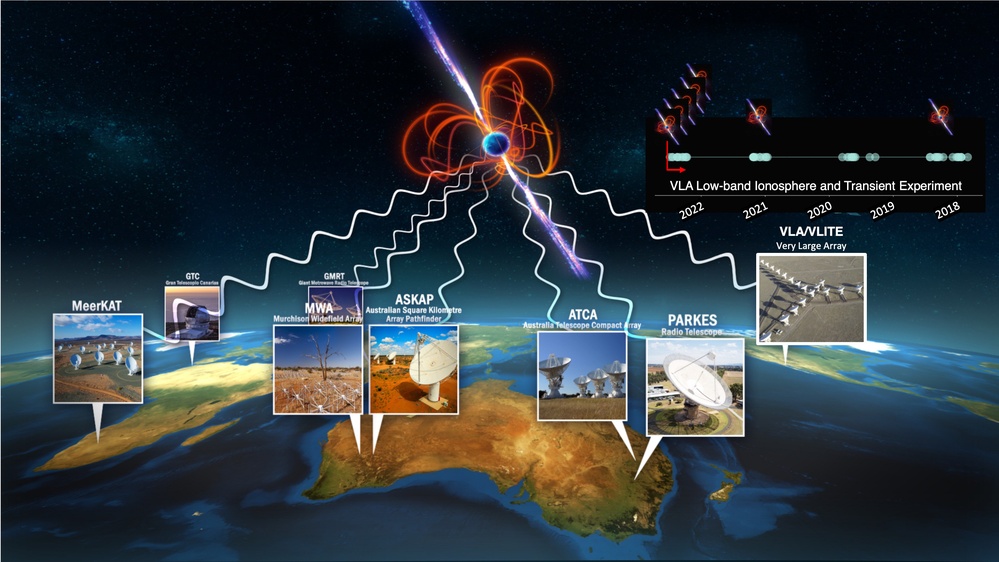
Artist impression of the magnetar that was discovered by the Murchison Widefield Array (MWA) radio telescope and other radio facilities around the world that helped confirm the discovery. Looking back in time using archival data from NRL’s VLITE instrument on the VLA, NRL astronomers were able to time the radio bursts back to 2018. The inset timeline (top right) of VLITE archival observations shows the MWA discovery as a red bar, blue dots are VLITE data sets searched and thumbnails of the magnetar show when VLITE detected the emission. MeerKAT - Credit: South African Radio Astronomy Observatory (SARAO), Gran Telescopio Canarias - Credit: Daniel López/IAC, Murchison Widefield Array - Credit: Marianne Annereau, Giant Metrewave Radio Telescope - Credit: NCRA, Australian SKA Pathfinder - Credit: CSIRO/DragonflyMedia, Australia Telescope Compact Array - Credit: CSIRO, Parkes Radio Telescope, Murriyang - Credit: CSIRO, Very Large Array - Credit: AUI/NRAO
| Date Taken: | 06.09.2023 |
| Date Posted: | 07.19.2023 13:03 |
| Photo ID: | 7921679 |
| VIRIN: | 230612-N-NO204-1001 |
| Resolution: | 2880x1620 |
| Size: | 1.65 MB |
| Location: | WASHINGTON, DISTRICT OF COLUMBIA, US |
| Web Views: | 41 |
| Downloads: | 4 |

This work, NRL Astronomers Track New Stellar Phenomenon, by U.S. Naval Research Laboratory, identified by DVIDS, must comply with the restrictions shown on https://www.dvidshub.net/about/copyright.